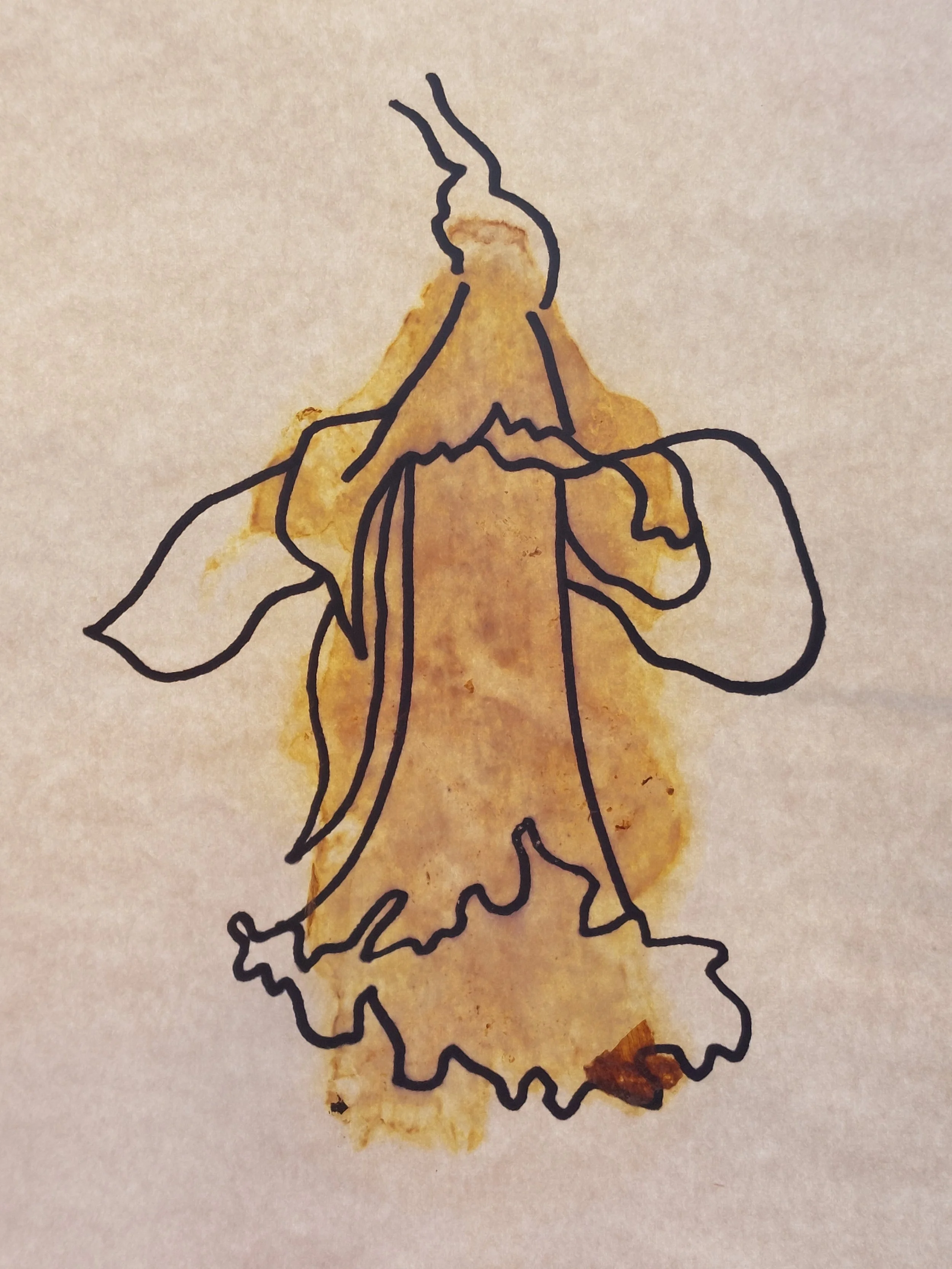Daffodils have occupied a key place in the popular imagination of English landscape since Wordsworth’s “daffodil” poem (“I Wandered Lonely as a Cloud”) secured their popularity in 1807. Who speaks in these representations? The loudest voice, in How to Draw: A Daffodil Triptych, is the black pen on the white paper (a combination of bleached tree and plastic, oil-based marker pen).The black line is the voice of human agency using natural materials as a mouthpiece. So often, the human representation of another life form entails the death, destruction, damage, silencing, drawing out or over of the nonhuman form.
Decaying daffodil flower heads were pressed into a pen-drawn image of the same heads to produce two further works: one is an imprint made by the colour leached from the daffodil flower and the black pen lines of its human representation; the other is a ghostly imprint, a paper shroud, where the form of the daffodil heads, now absent, leave their indent in the page. Something of the flowers is drawn into the paper, imprinting a response to the human effort to represent them, a quiet speaking back or about this interspecies impression and the silent cost of representation?
This seemingly innocuous work asks what the cost of human art making and reproduction is to the world we seek to celebrate with our representations? What is the shadow ecology embedded within our making?
